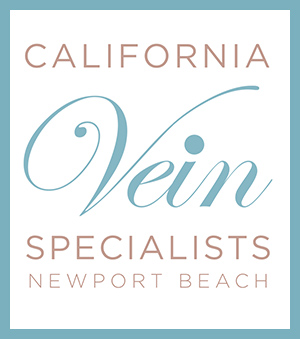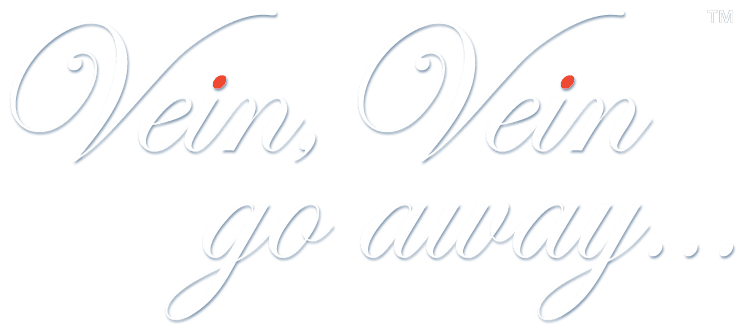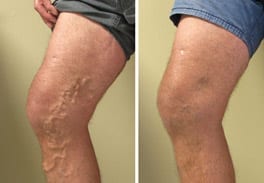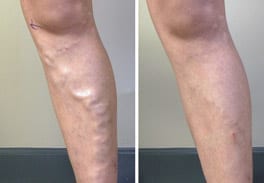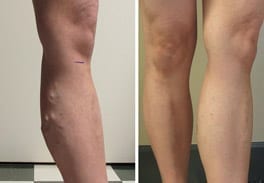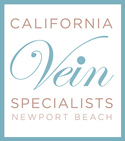Varicose veins are commonly found in both women and men and can be very painful and unsightly.
In order for a vein doctor to determine the cause of varicose veins, the doctor will use a non-invasive ultrasound, which will help assist the doctor in evaluating the veins that are not visible on the surface of the skin, and help decide the best treatment plan for a patient with varicose veins. Varicose veins are commonly caused by the incompetent valves of the saphenous vein that can lead to venous hypertension, dilatation, chronic venous stasis and then finally chronic inflammation.
 Veins depend on one-way valves that keep blood moving in an upward motion. Without the correct blood flow, the blood reverses its flow and causes the valves to close improperly. When a valve fails to close correctly, it can cause a vein to swell and become painful, and bulging varicose veins result. Increased pressure to the vein can cause a person’s legs or ankles to swell and to have severe pain and aching. Skin changes, and ulceration are a result of the chronic inflammation. Phlebitis can also occur when suffering from varicose veins. The risk of a deep vein thrombosis is also increased in patients with chronic venous insufficiency.
Veins depend on one-way valves that keep blood moving in an upward motion. Without the correct blood flow, the blood reverses its flow and causes the valves to close improperly. When a valve fails to close correctly, it can cause a vein to swell and become painful, and bulging varicose veins result. Increased pressure to the vein can cause a person’s legs or ankles to swell and to have severe pain and aching. Skin changes, and ulceration are a result of the chronic inflammation. Phlebitis can also occur when suffering from varicose veins. The risk of a deep vein thrombosis is also increased in patients with chronic venous insufficiency.
To help the severity of the symptoms graded compression stockings are highly recommended. Compression stockings help the fluid out of the legs and help it flow to the heart. Staying active and minimizing the amount of time a person sits or stands is also very helpful. Compression stockings also reduce the risk of DVT.
Treatments for varicose veins have come a long way over the years. Instead of vein stripping, many doctors use an endovenous laser treatment that is virtually painless. With using this exciting new technology, patients are able to receive their treatment in a comfortable office atmosphere, instead of visiting a hospital. Patients receive a local anesthetic that is administered around the vein.
During the procedure, heat energy, from a laser or radio frequency is released to eliminate the improper flow in the affected vein, which is called Endovenous Ablation of the saphenous vein. Endovenous laser procedure allows for a virtually painless correction of chronic venous disease. Now the phlebology specialist can treat serious venous disease in the office setting, all patients are awake without the need for general anesthesia. Laser energy painlessly eliminates the abnormal flow in the vein without incisions, without scaring and with no down time. A compression stocking is worn after the procedure for five days. The patient is encouraged to walk and even exercise immediately after the procedure. Most of our patients miss no work. Normal daily activities can be resumed immediately.
 These procedures are extremely safe and effective procedures. There are risks, as no procedure is risk-free. Severe complications are extremely rare and unlikely. Endovenous procedures are minimally invasive and much less chance of thrombosis when compared to older methods such as vein stripping. Endovenous ablation allow for safer, less expensive and superior cosmetic results.
These procedures are extremely safe and effective procedures. There are risks, as no procedure is risk-free. Severe complications are extremely rare and unlikely. Endovenous procedures are minimally invasive and much less chance of thrombosis when compared to older methods such as vein stripping. Endovenous ablation allow for safer, less expensive and superior cosmetic results.
Patients considering treatments should consult with a highly trained phlebologist who is familiar with all aspects of vein disease. Board certification in Phlebology is preferred. Phlebology is the specialty of venous disease.
At California Vein Specialists, Dr. Michael Leary is certified by The American Board of Venous and Lymphaic Medicine in phlebology and is a National Training Physician, training other Doctors from all over the US.
Causes of varicose veins
To understand the causes of varicose veins it is important to review the basic function of veins and their basic physiology.
Remember the heart is pumping blood through out the body to supply oxygen and other nutrients to the entire body, so the heart is pumping blood from the heart to the body parts. The veins carry the used blood or unoxgenated blood back the heart. The blood that is pumped back to the heart flows in these veins that act like one-way valves that keep the blood flowing toward the heart. In the legs the calf muscle or musculovenous pump ejects 60 % of the blood in the legs every time the calf muscle contracts. The calf muscle is the primary mechanism that returns blood from the legs back to the heart. The veins returning blood from the legs have the toughest job of all the veins in the body because of the high pressure created by standing and because of the distance the blood has to be returned, and because of the force of gravity. This makes the leg veins the primary location of varicose veins and spider veins.
Heredity has a strong association with your chances of developing venous disease. If both parents have venous disease you have about a ninety percent chance that you will have the same. If you are female and you have one parent with venous disease, you have about a sixty percent chance of developing varicose veins . If you are male with one parent affected, your chances are about twenty five percent. So women have more venous disease then men but men that are affected normally have more serious complications such as ulcers. Other strong associations are increasing age, number of pregnancies, and living in an industrialized nation.
Obesity, diet, constipation, smoking diabetes hypertension has not been confirmed to have any relationship to the development of venous disease.
To learn more go to the American College of Phlebology website.
How to prevent Varicose Veins?
Exercise regularly. Choose low-impact activities such as walking, cycling, rowing and swimming. Walking and jogging will help improve circulation in the legs. Exercise can also reduce the overall high blood pressure and strengthen the entire circulatory system.
Avoid prolonged standing. Try not to stand in one place for a long time because it can increases venous pressure in the legs and feet. Over time this pressure can weaken the blood vessel walls.
Maintain a healthy weight. Having too much weight can cause the entire circulatory system to work harder. Being overweight can put excess pressure on your legs. It is good to exercise regularly and develop healthy eating habits. This can reduce the risk of varicose veins.
Quit smoking. Smoking is bad for your health and can cause many health problems. High blood pressure is associated with smoking which can cause varicose veins.
Raise your legs. If you have to stand up for long periods, remember to take time to relax your legs. Improve circulation by elevating your legs up 6 to 12 inches above your heart when lying down. Doing this a few times a day will help the blood in the lower legs flow easily back to the heart. By taking some pressure off the legs it will help prevent blood from pooling in the veins. Be sure to stretch your legs if you have to sit for long periods. Rotate your ankles and flex your toes while you are sitting.
Check your wardrobe. Wear clothes that don’t constrict your waist, groin or legs. By avoiding tight-fitting clothes on your legs and around your waist it will improve circulation to your lower body. Wear comfortable shoes and avoid wearing high heels. The stress they put on your lower legs can cause a constriction in blood flow from the leg back to the heart. Also, make sure your shoes are properly fitted.
Sit up and stand up straight. Sit up straight and don’t cross your legs. Crossing your legs will slow the upward flow of blood back to the heart and increases the pressure on the insides of the leg veins. Good posture improves circulation and helps decrease pressure in your veins.
Avoid high-estrogen birth control pills. Long-term use of high-estrogen birth control pills have been shown to increase the risk of varicose veins by altering circulatory valve functioning.
Wear compression hose. If you’re developing varicose veins, try regularly using compression hose (support hose). These come in a variety of different compressions. The pressure in the stockings is graded and this allows for the stockings to constantly squeeze the leg muscles. This motion helps to drive blood back to the heart, reduce swelling in the feet and prevent blood clot formation.
Deep-Vein Thrombosis
Good news about DVT prevention
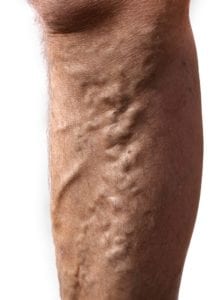 Statin drugs are used for cholesterol lowering and have been proven to reduce the risk of serious cardiovascular events like fatal heart attacks and strokes. Statin drugs work by reducing the total cholesterol levels in the blood. They work by blocking the key enzyme required for by the body to produce cholesterol. An additional mechanism of action statins has is there ability to reduce inflammation through out the body. This reduction in the body’s inflammation may even reduce the risk of some cancers. A recent study suggests that statins may reduce the risk of prostate cancer and possibly even shrink
Statin drugs are used for cholesterol lowering and have been proven to reduce the risk of serious cardiovascular events like fatal heart attacks and strokes. Statin drugs work by reducing the total cholesterol levels in the blood. They work by blocking the key enzyme required for by the body to produce cholesterol. An additional mechanism of action statins has is there ability to reduce inflammation through out the body. This reduction in the body’s inflammation may even reduce the risk of some cancers. A recent study suggests that statins may reduce the risk of prostate cancer and possibly even shrink
Deep-Vein Thrombosis
Dr. Leary wanted to inform you that the coalition to prevent Deep-Vein Thrombosis (DVT) is starting its sixth annual National Deep-Vein Thrombosis awareness month. This is a very important campaign to educate Americans about the dangers of DVT and to help reduce the risks. Did you know that in the United States DVT effects up to 2 million people annually? Approximately 300,000 Americans die each year from a pulmonary embolism (PE) that resulted from a DVT. DVT related PE is the most common cause of preventable hospital death. Complications from DVT kill more people each year in the U.S. than
Phlebitis of the Superficial Veins
Superficial Thrombophlebitis I have many patients come to my office for the first time with phlebitis of the superficial veins. This is a condition that is rarely life threatening and fairly common in patients with varicose veins. My concern is that many patients referred to my office have already been seen and diagnosed by their physician, and in my opinion, have not been properly diagnosed. A complete diagnostic work up is very important because many cases of simple superficial phlebitis are associated with deep vein thrombosis which I have already discussed. Deep vein thrombosis is associated to very serious
Deep Venous Thrombosis Awareness
In the United States, about 2 million people per year develop deep vein thrombosis. Most of them are aged 40 years or older. Up to 600,000 are hospitalized each year for the condition. Deep vein thrombosis can lead to a more serious complication, blood clots in the lung (pulmonary embolism). Statistics reveal that at least 650,000 patients die each year from pulmonary embolism, making it the third most common cause of death in the United States. To Learn more about DVT: schedule a exam with Dr. Leary at California Vein Specialists 949.515.9377
